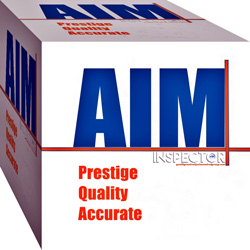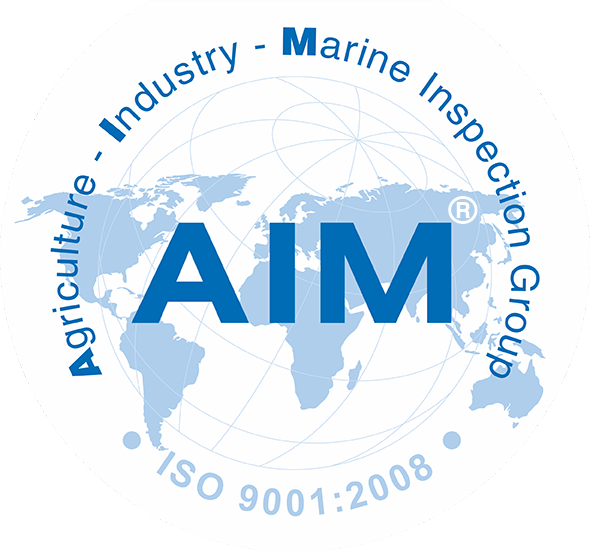Vanning survey and Certificate
What is vanning list and IMDS codes?
What is the process of vanning?
What is a vanning survey for cargo and containers?
What is vanning survey and inspection activities?
How is the content of A vanning survey certificate of AIM Group?
Vanning survey and Certificate
These objects of a Vanning survey and certificate are the dangerous cargo and containers with the main purpose is carried out in order to ensure the safety of the goods and controlling of its handling personnel, at period of loading, during transportation by sea, by air, rail, or road.
The stowage and securing of irregular cargo on containers and dangerous or hazardous goods inside containers according to the IMDG (International Maritime Dangerous Goods) code.
In such instances, surveying of vanning operations of each container is required and a vanning report is typically issued following the survey. The scope of the survey is depending on the type of the container, for which internal procedures are developed:
DV 20 feet and 40 feet containers.
ISO tank containers.
Reefer containers.
The procedures can be requested at the HQ of AIM Group.
Benefits of Vanning Survey and Certificate are clear.
Requirements of all sections of Chapter 1.3 of the IMDG Code, CSC regulations, CTU guidelines and USCG 49 CFR 172.704 are met by appointing qualified and IMDG trained Surveyors.
Ensure Dangerous goods are stowed and secured as per IMDG Code and CTU Code.
Non-Compliances to IMDG and CTU Code requirements are identified at the early stage during packing of the Containers and Client/Shipper is informed for further action where appropriate.
Clients and Shippers are informed of best practice of transport of Dangerous goods and raise awareness of IMDG and CTU Code.
Due diligence checks of Dangerous goods packed are carried out on behalf of Liners.
Minimize risk of Undeclared Dangerous goods, avoid risk of Misdeclaration of Dangerous goods and prevents Incidents and Accidents during Multimodal transportation and Ocean shipping.
Avoid expenses of re-stuffing, additional costs due to non-compliance of IMDG and CTU code requirements if identified by Customs and Port authorities after Container Gate-In at port of Loading.
Avoid expenses of Salvage containers, Fines, Delays, Port infrastructure charges, Re-placarding, additional container rent due to non-compliance of IMDG and CTU code requirements if identified by Water police, Customs and Port authorities during random inspection at the transshipment port and Port of Discharge.
Avoid expenses due to Delays, Fines, Additional costs due to non-compliance of IMDG and CTU code requirements if identified during Concentrated Inspection Campaign (CIC) by various Port state control inspectors (PSC) on Dangerous Goods as per their MOUs.
Referring to:
Pre-Shipment Inspections and certification activities
Inspection and certification of quality and quantity of goods in trade and import-export activities
Preloading survey and loss prevention activities
Pre-Shipment Inspections and Benefits
Pre-Shipment Inspections (PSI) generally include physical inspection for the purpose of verifying that the goods correspond to the documents provided in respect of: goods description, quantity and quality specification and the import regulations of the importing country (e.g. labeling, health, safety, etc.).
The physical inspection is carried out in the Country of exportation/supply of the goods and, whenever possible, in the manufacturer’s or supplier’s premises. Inspection of bulk cargoes is usually undertaken at time of loading of the ocean vessel. Occasionally, it may be necessary to carry out inspections during production or witness tests at the manufacturer’s premises.
The activities of pre-shipment inspections and purposes
-
Testing and laboratory analysis on Quality in comparison with Terms and Standards
-
Inspecting and Advice on Quantity
-
Surveying and consulting on Safety
-
Issuing the certification of inspection results
The locals of pre-shipment inspections and reason
-
At factory of supplier / seller (Q&Q)
-
At loading point (Q&Q and safety)
-
At port / berthing (Q&Q and safety)
-
On the ship (Q&Q and safety)
-
At other local (Q&Q)
For example, 1: Vanning survey and Certificate for the charcoal goods transported by sea:
With a charcoal shipment to be shipped by the sea transportation to your buyer in oversea, the marine warranty surveyor of AIM Group will have conducted the Vanning Survey and certificate.
to confirming that:
Cargo is packed in accordance with IMDG Code.
Packaging should be impervious to air & in good condition, & must not be defects.
Temperature of cargo should not be more than 5-degree C above the ambient temp.
There should be no burning smell or presence of smoke during vanning
Void space of 30 cm must be left on top of cargo & at door end to assist fire fighting
Description of whole cooling process and the chemical (or steam) used for activating.
Minimum of 14 days of pre-cooling prior to packaging.
Total number and size of containers
Container numbers
Seal numbers against respective container numbers
Date of vanning of each container

The Vanning Certificate will be issued after the Vanning Survey processing done witht he results are passed by AIM Group and Carriers. Vanning Certificate require on every shipment every single container. The main issue is about temperature and dead space when good loading on container. Its important as standard operating procedure if any burning case on carrying this product. Cost of Vanning survey is depending on Factory location as the surveyor need to be on place on every stuffing.
The figure below illustrates the consequences of improperly stowing dangerous goods into containers!!!

For example, 2: Vanning survey and Certificate for the gas lighter goods and containers in shipping on board:







